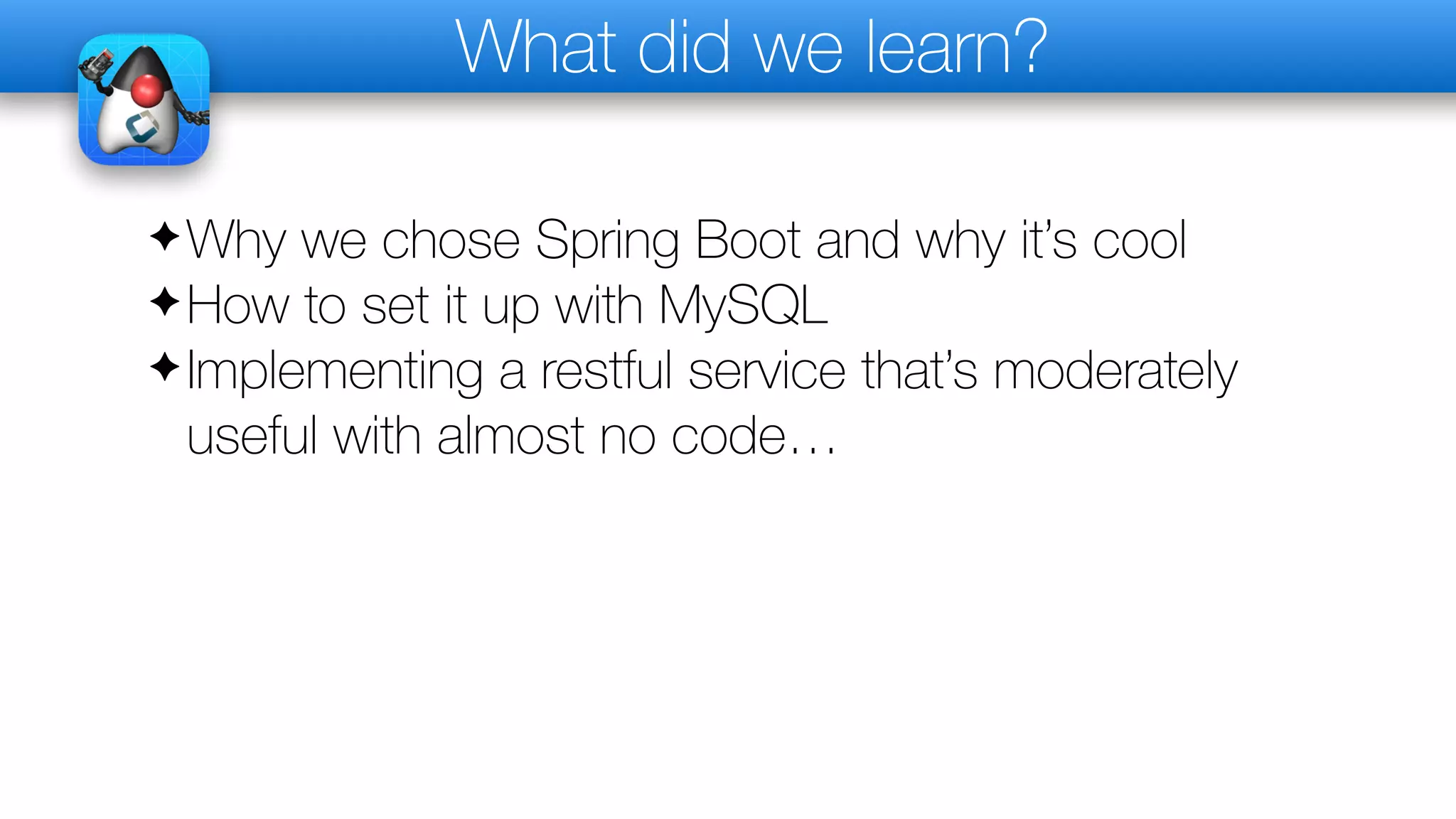Spring Boot makes it easy to create production-grade Spring applications that require minimal configuration. It provides tools to generate a single jar file containing an embedded web server so applications can be run with no external dependencies. The document discusses setting up a Spring Boot project with MySQL database integration using JPA to store and retrieve objects. It demonstrates creating a basic RESTful service to add and fetch items from the database with minimal code.

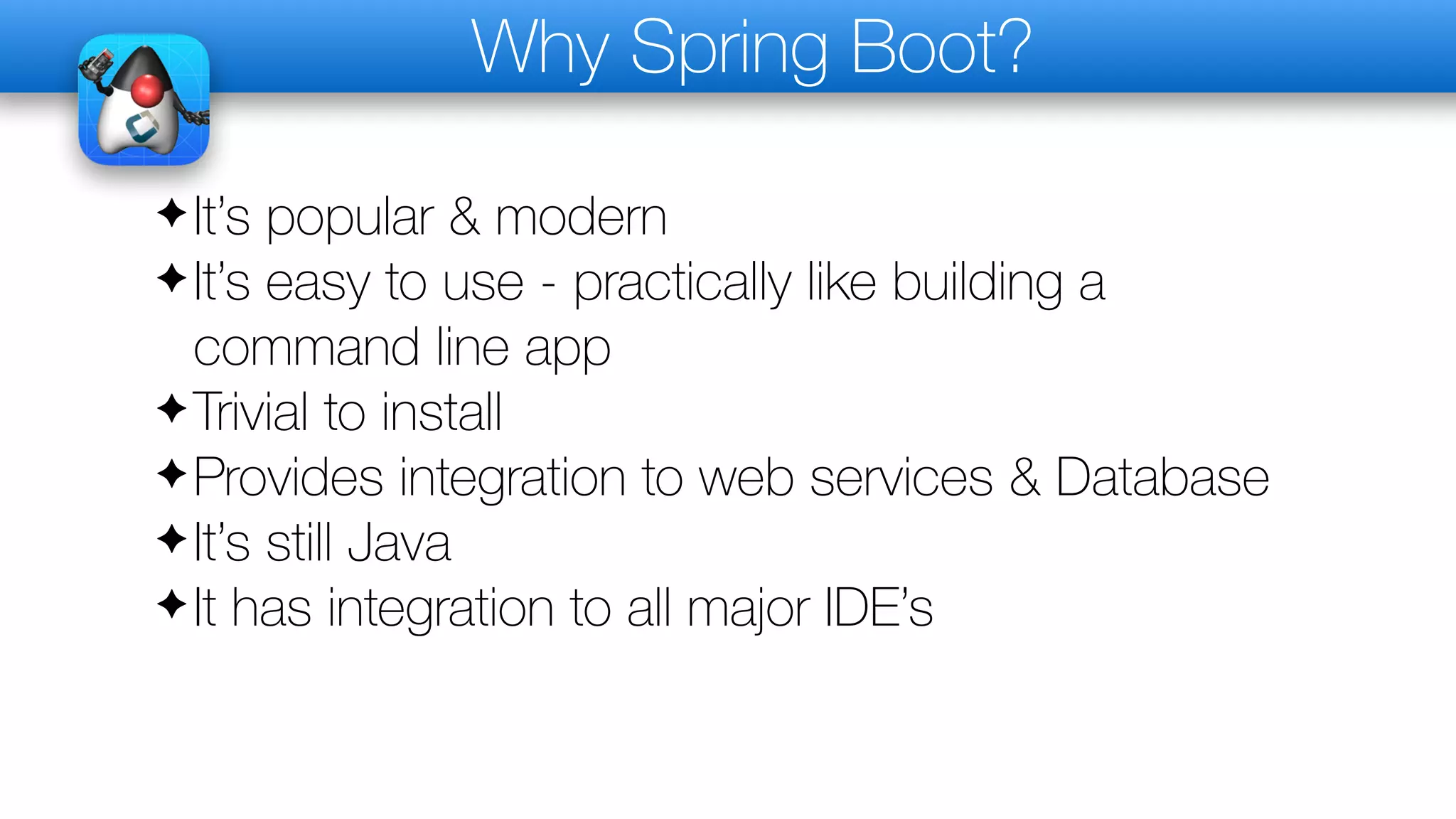
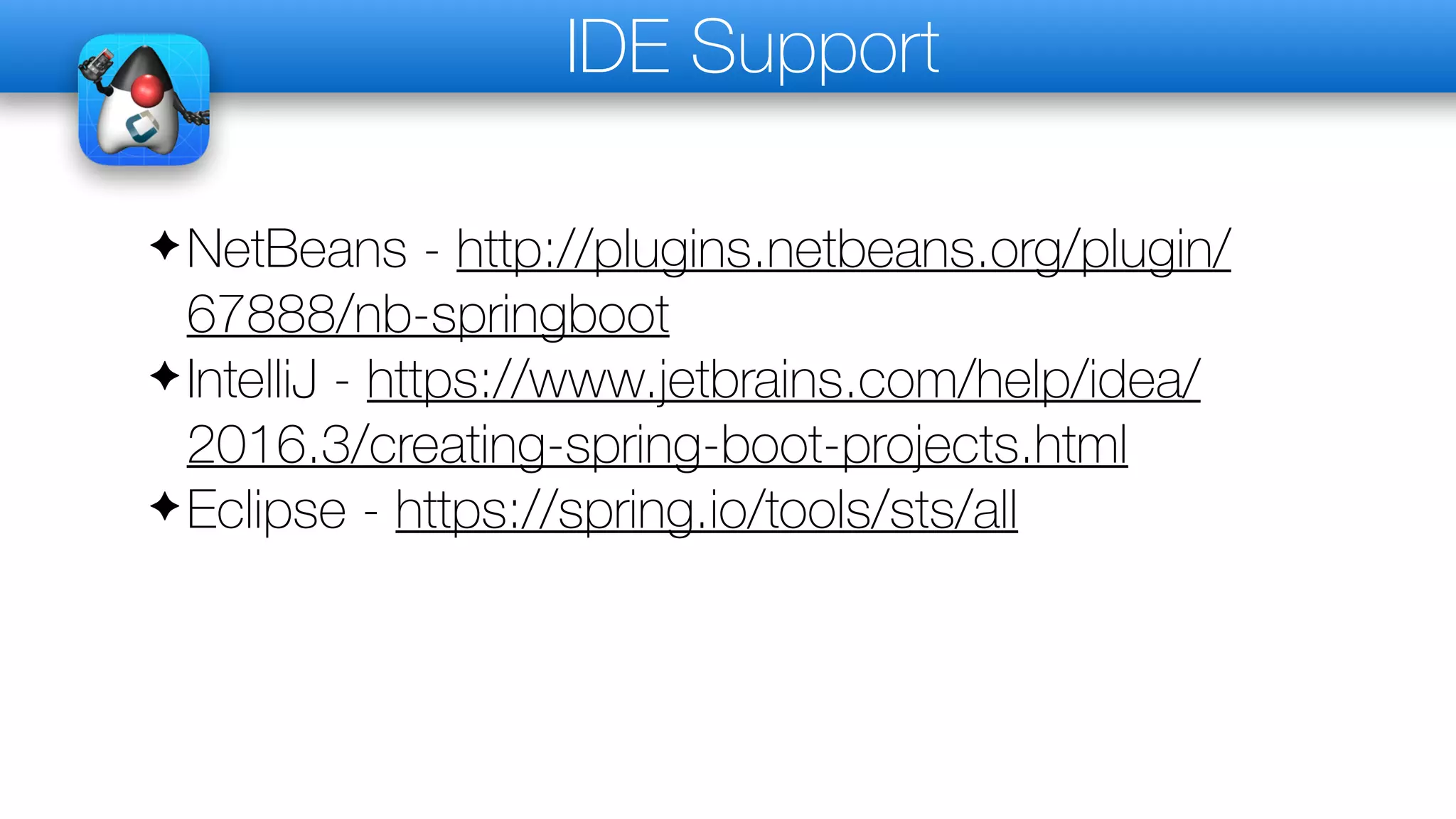
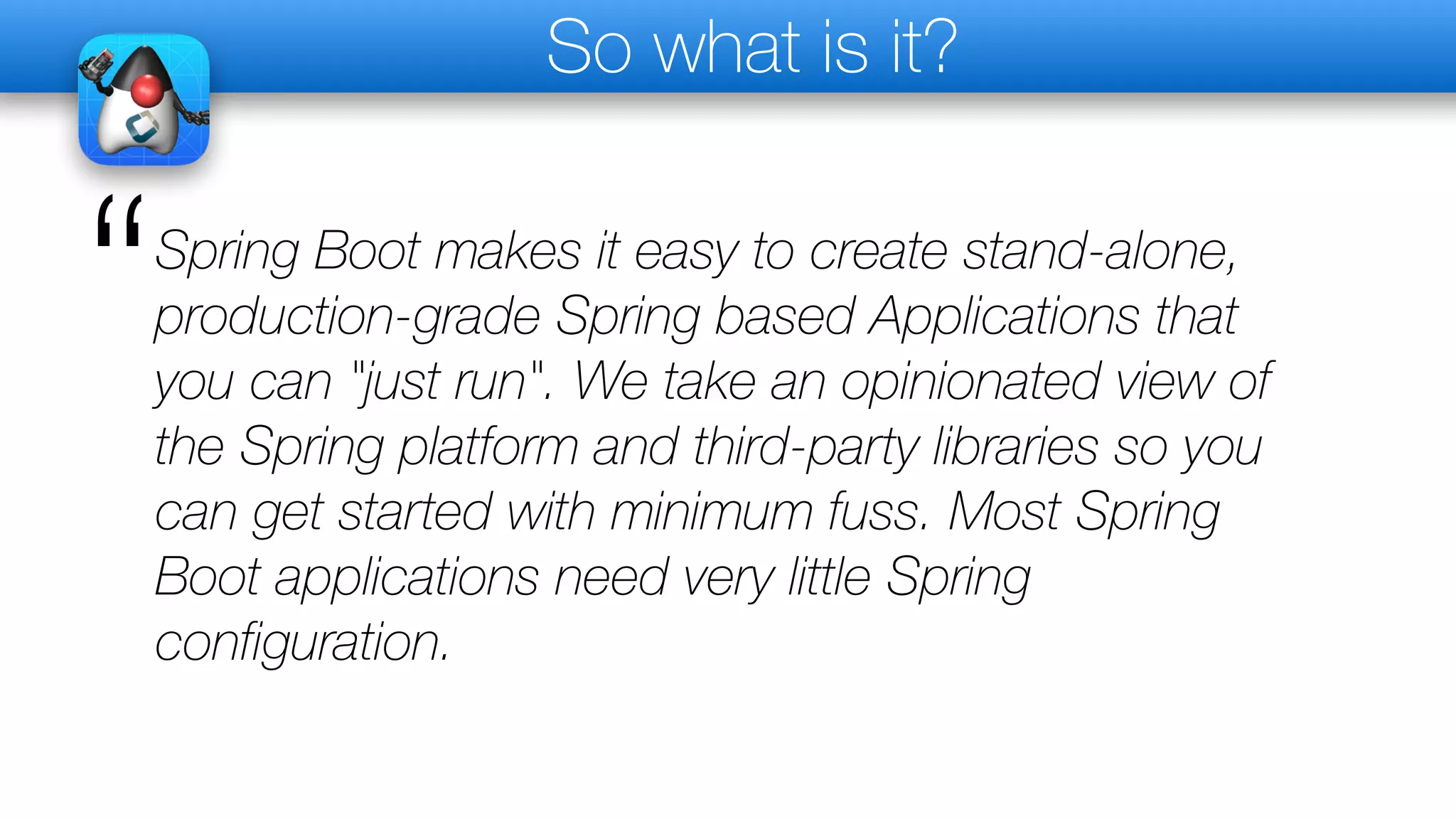
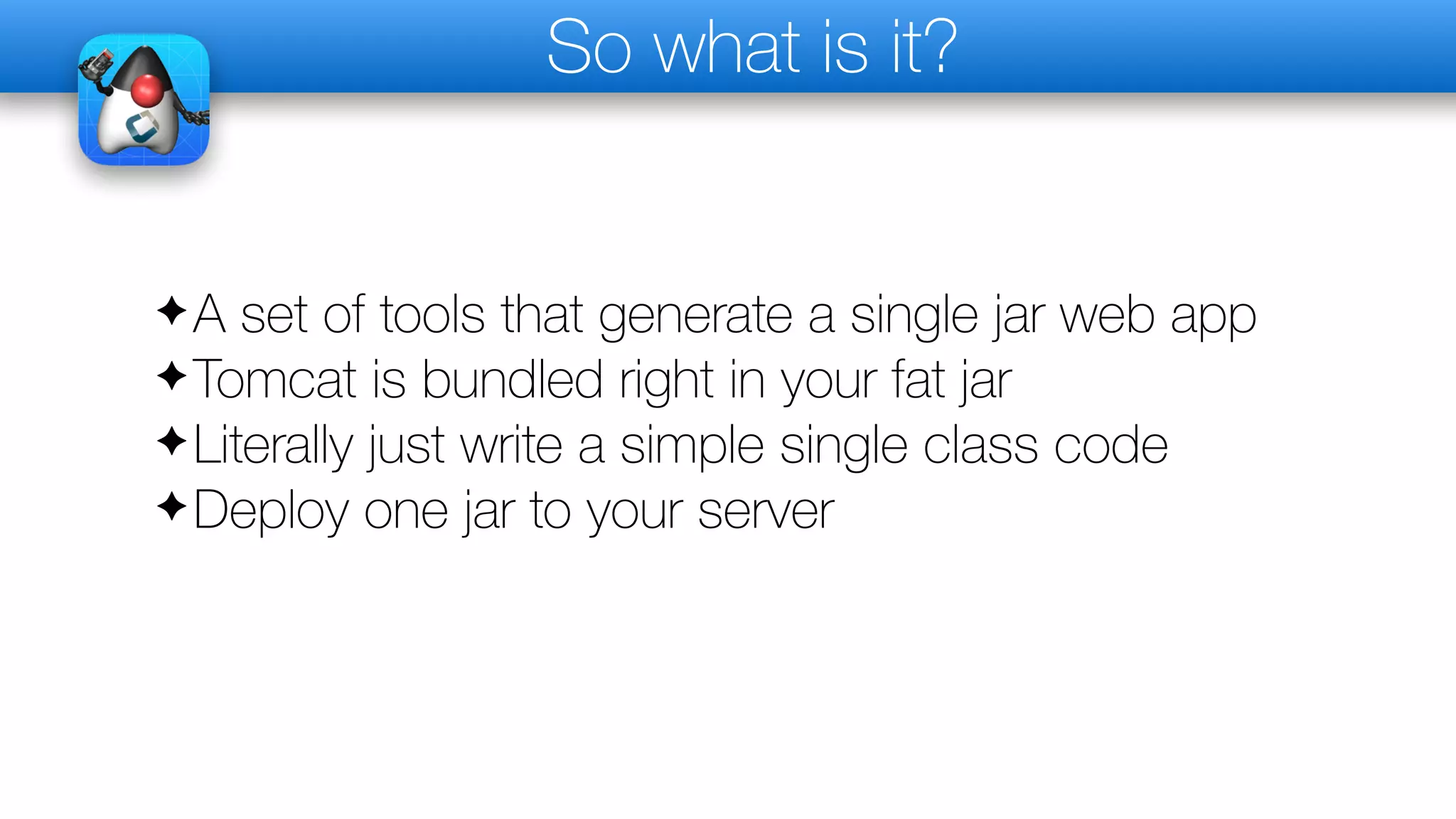
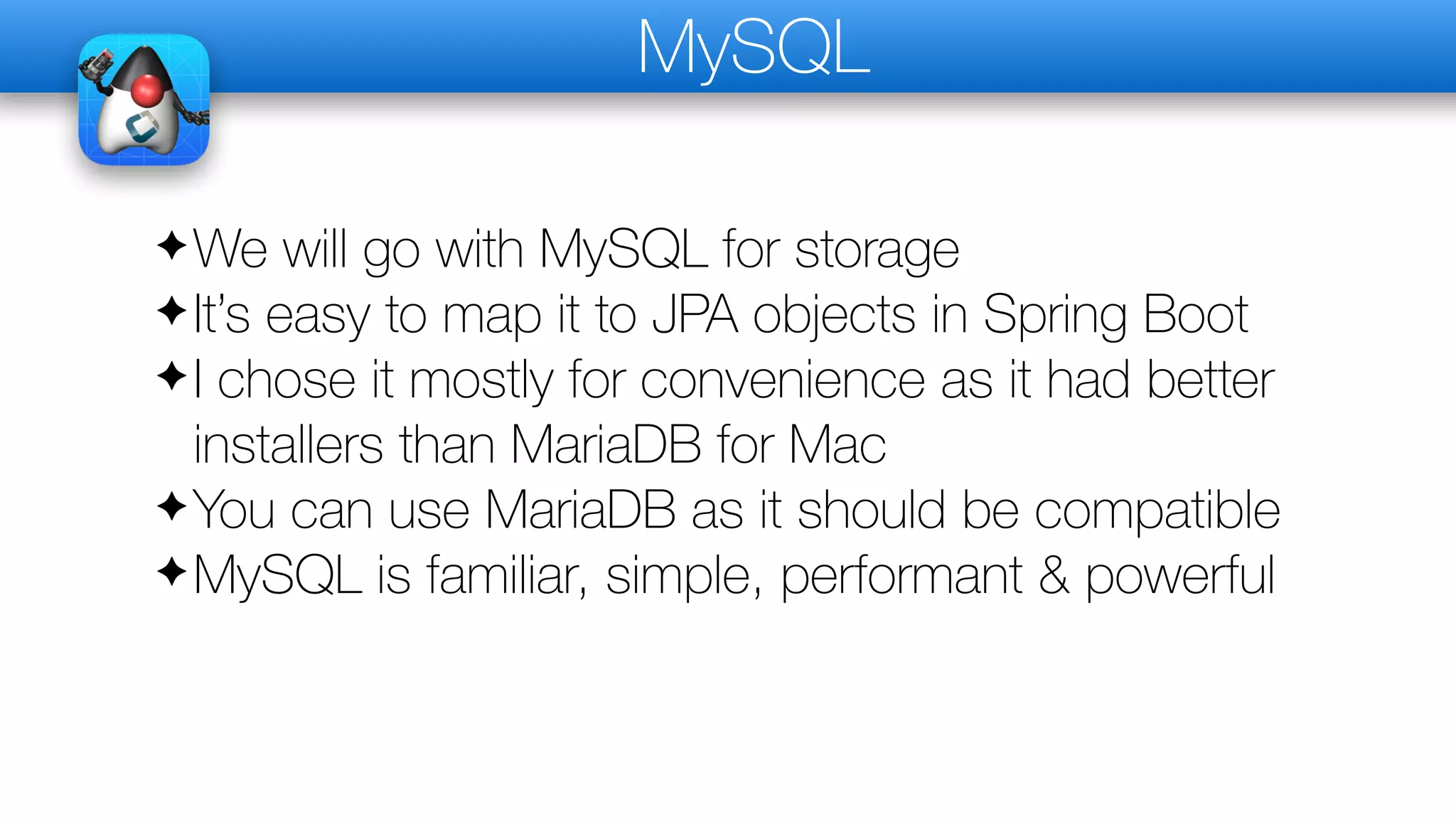
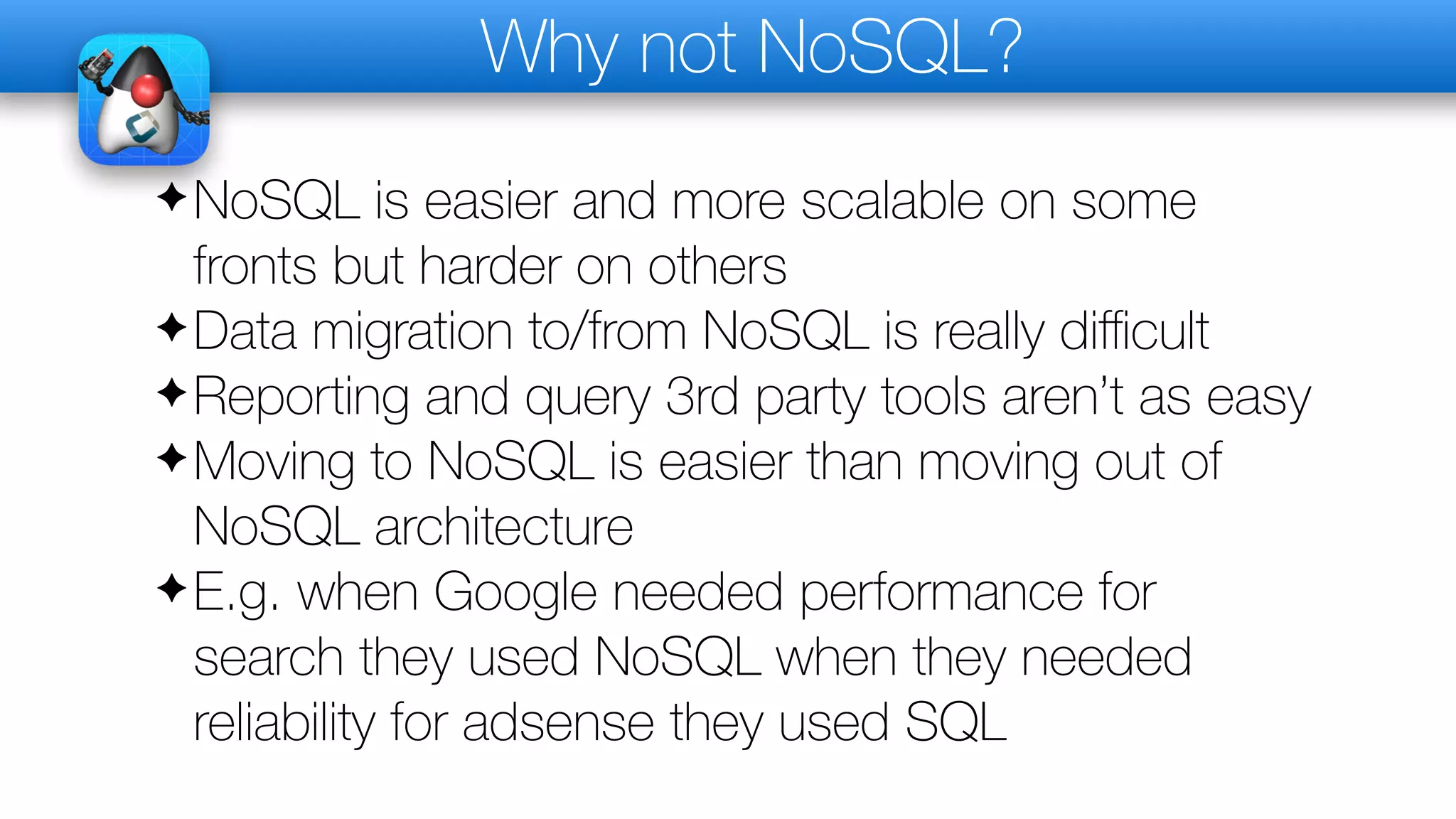
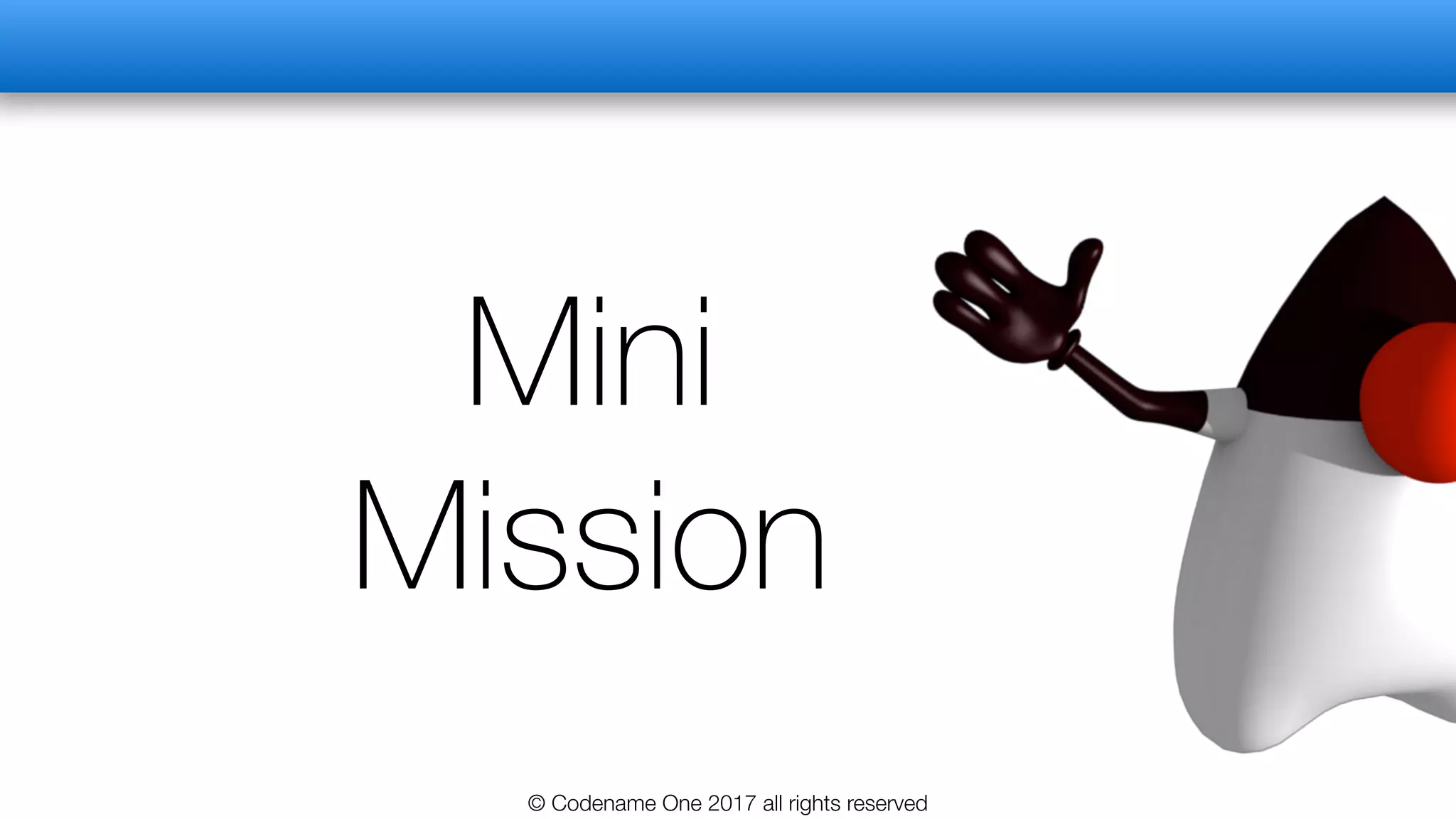
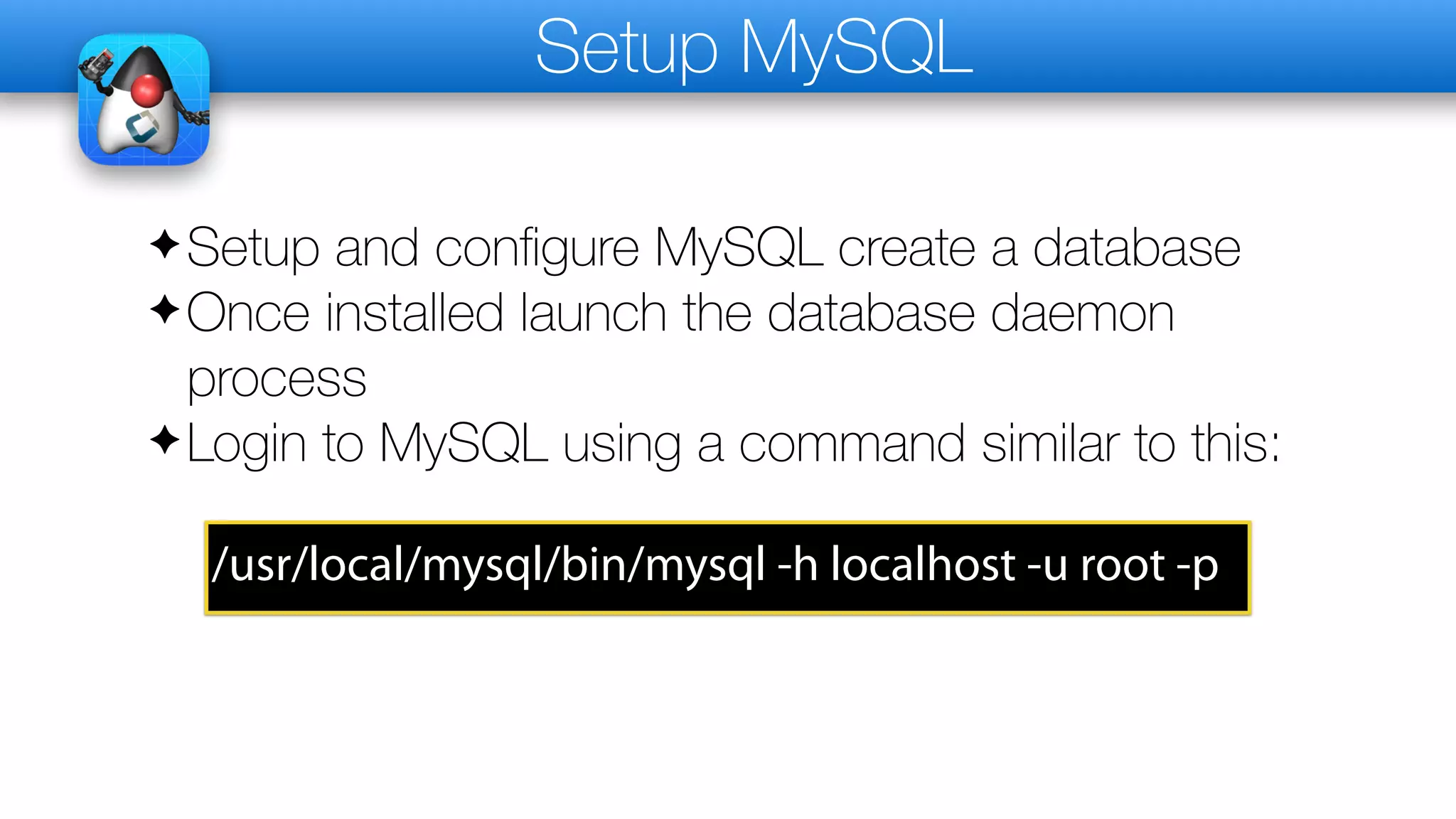
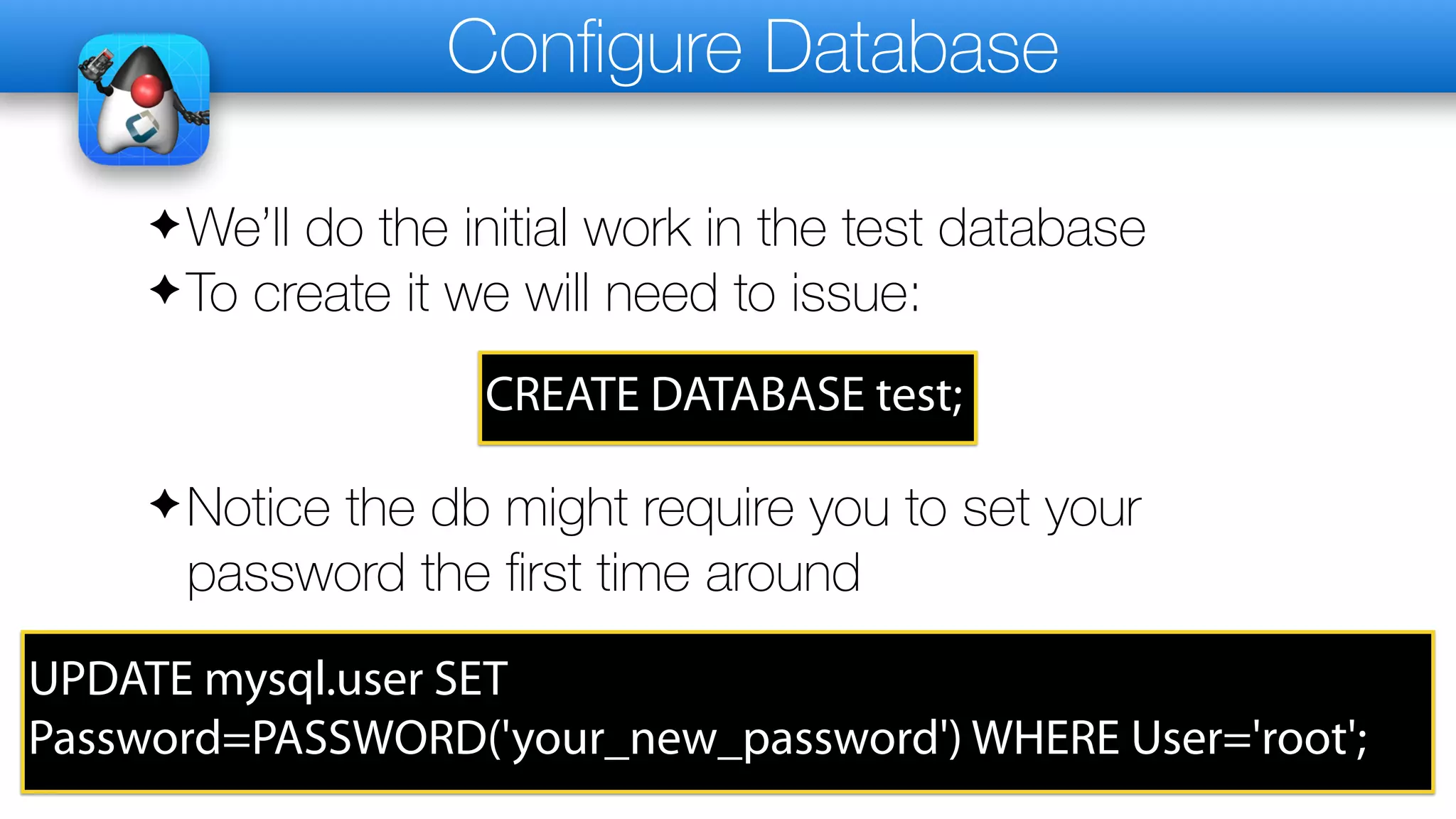
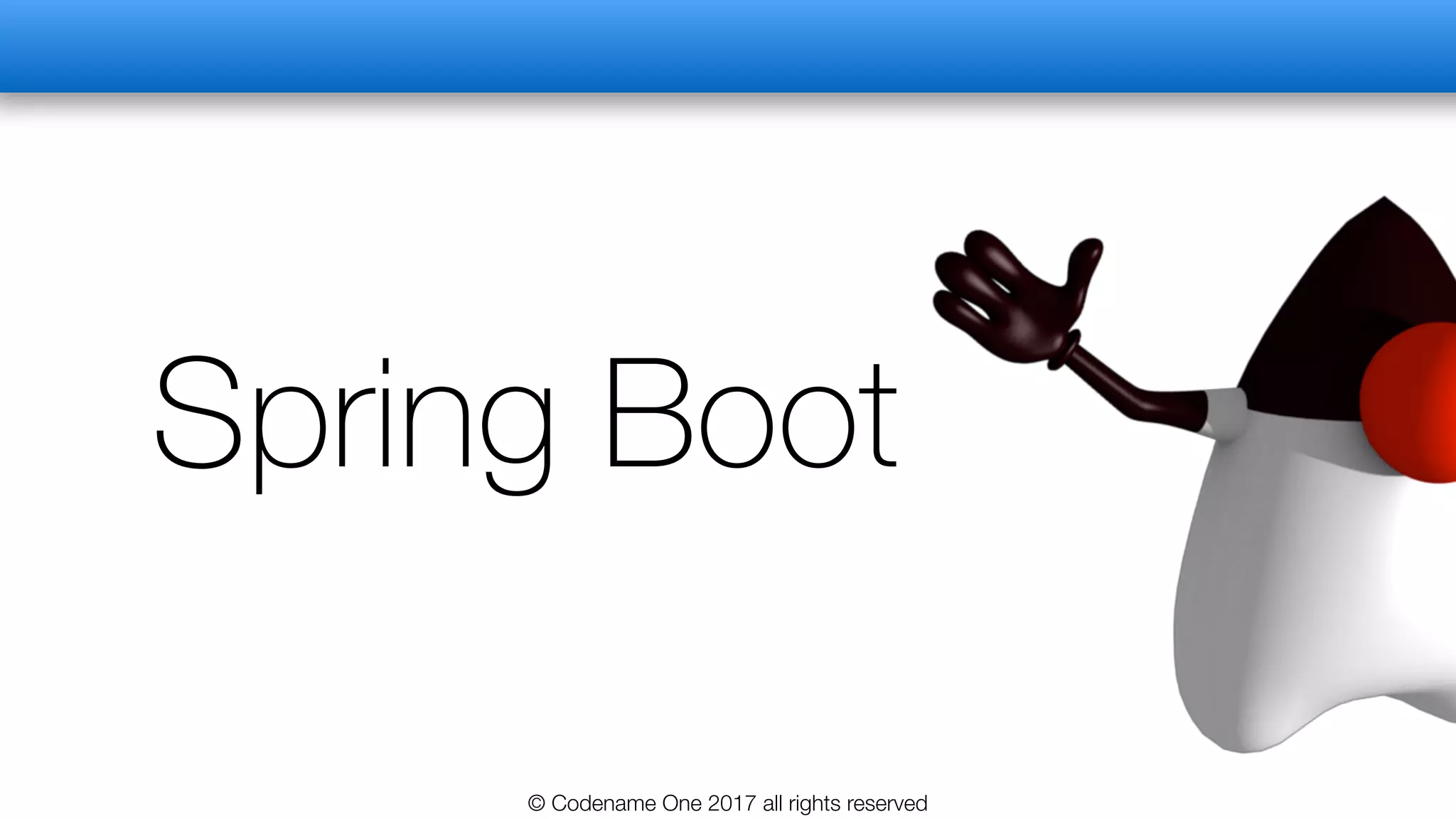
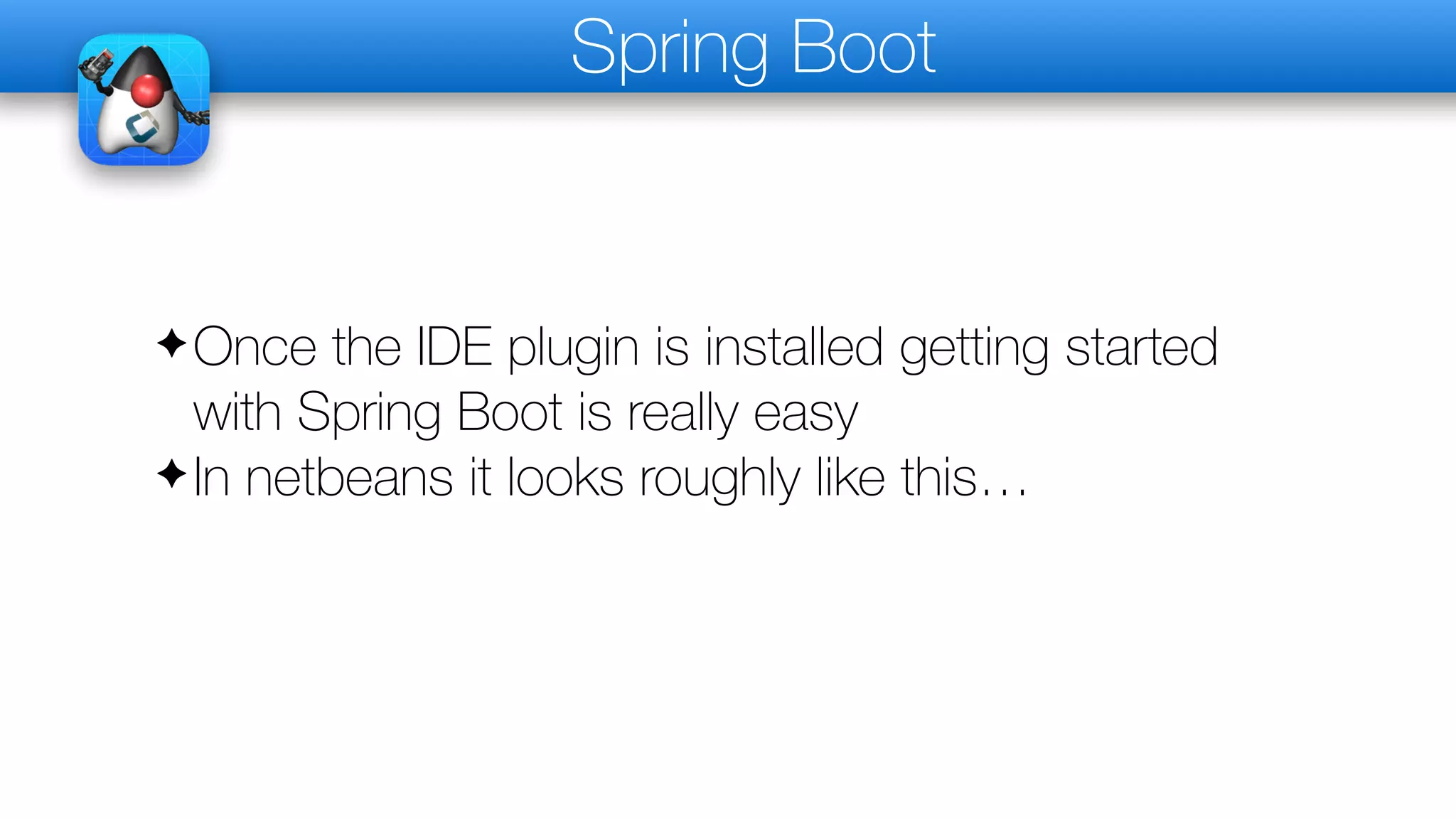
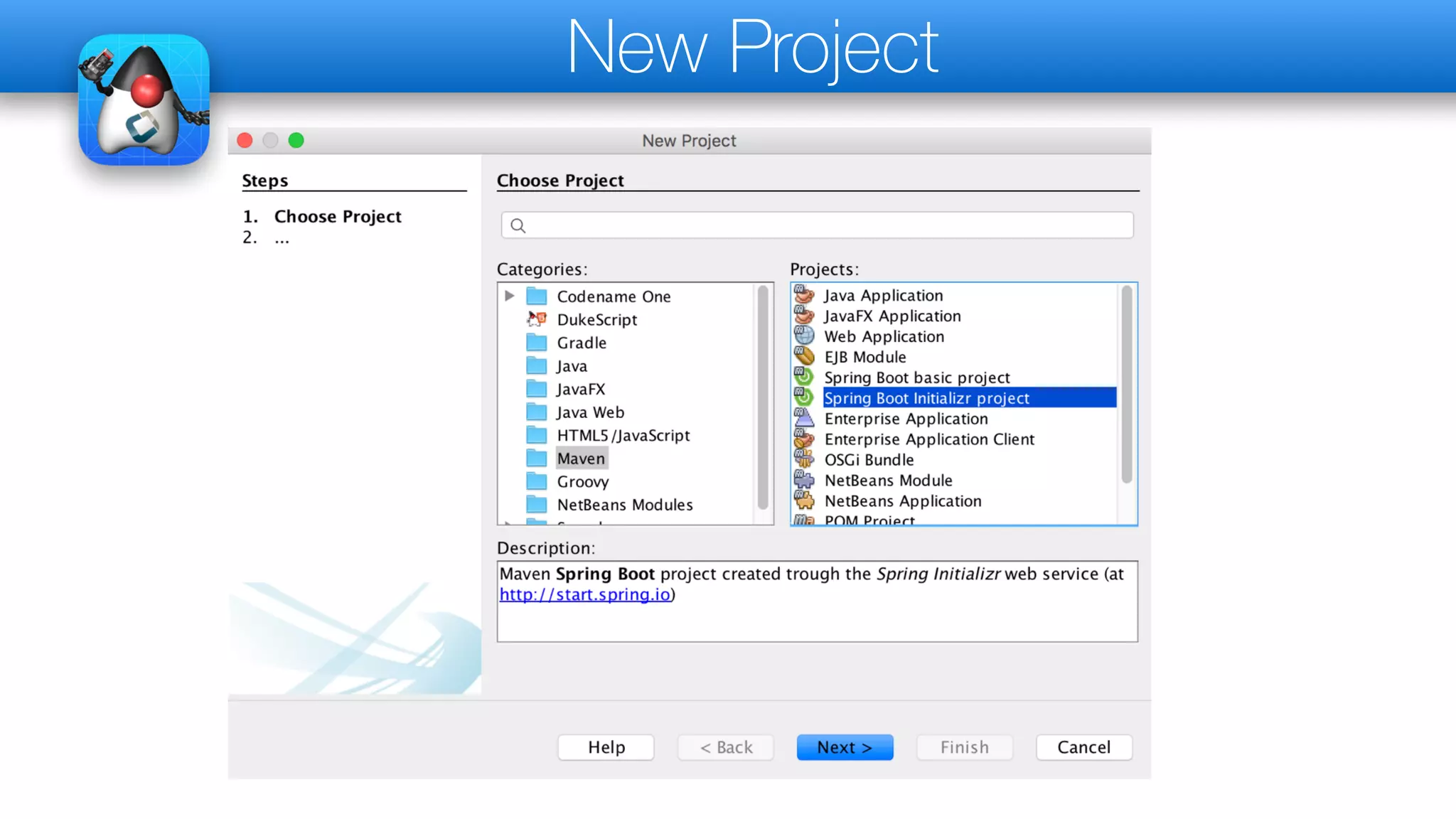
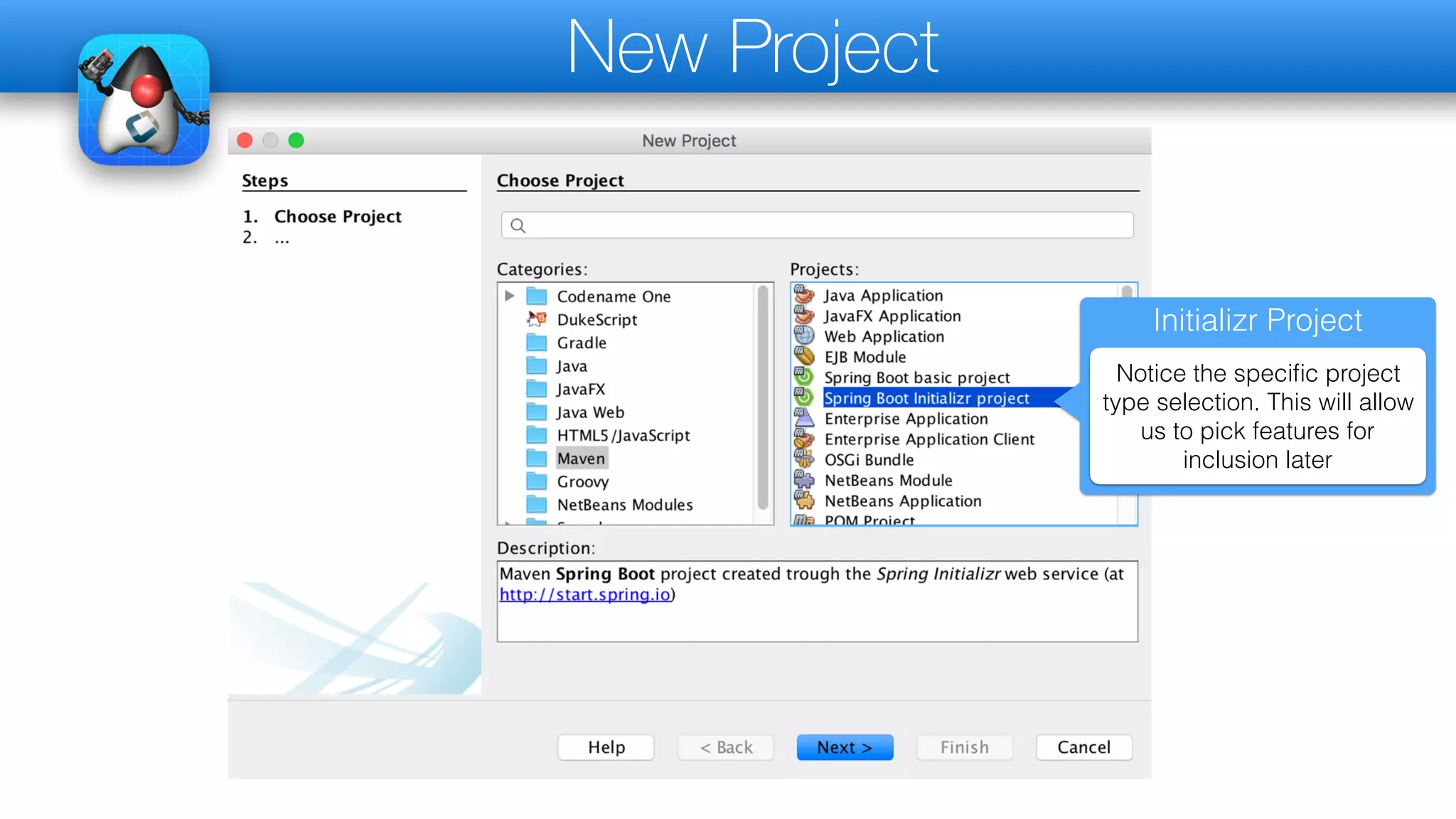
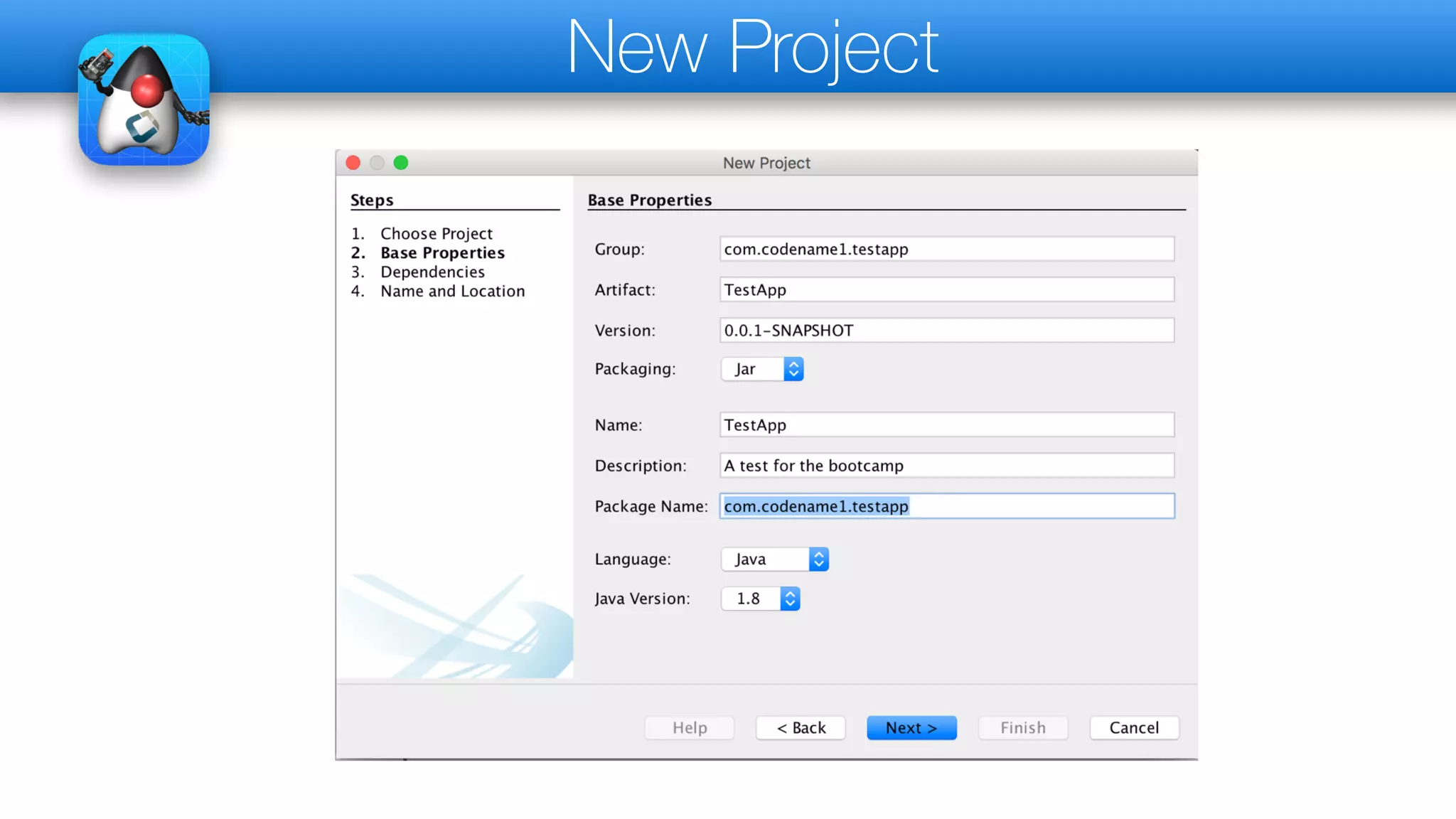
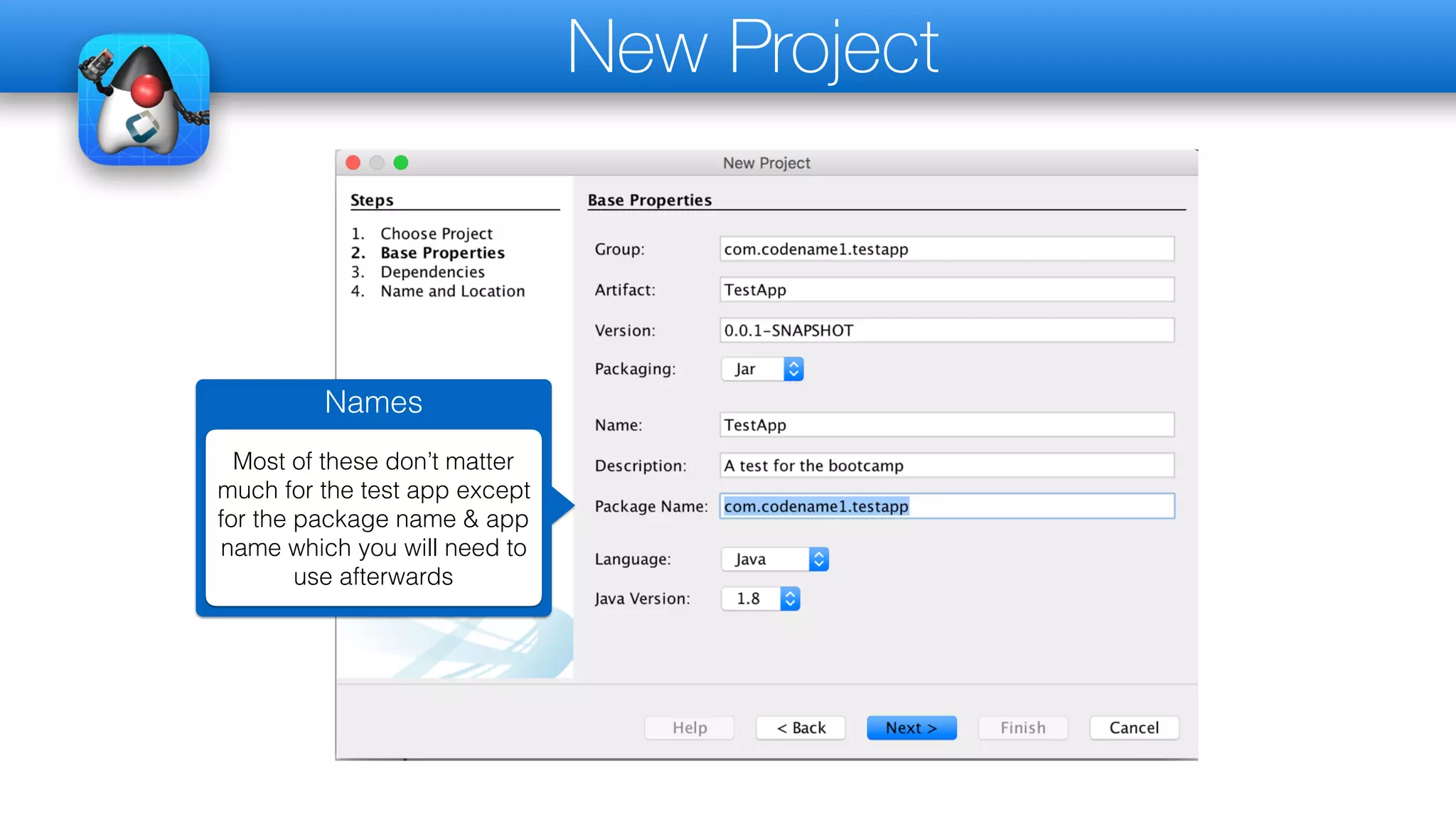
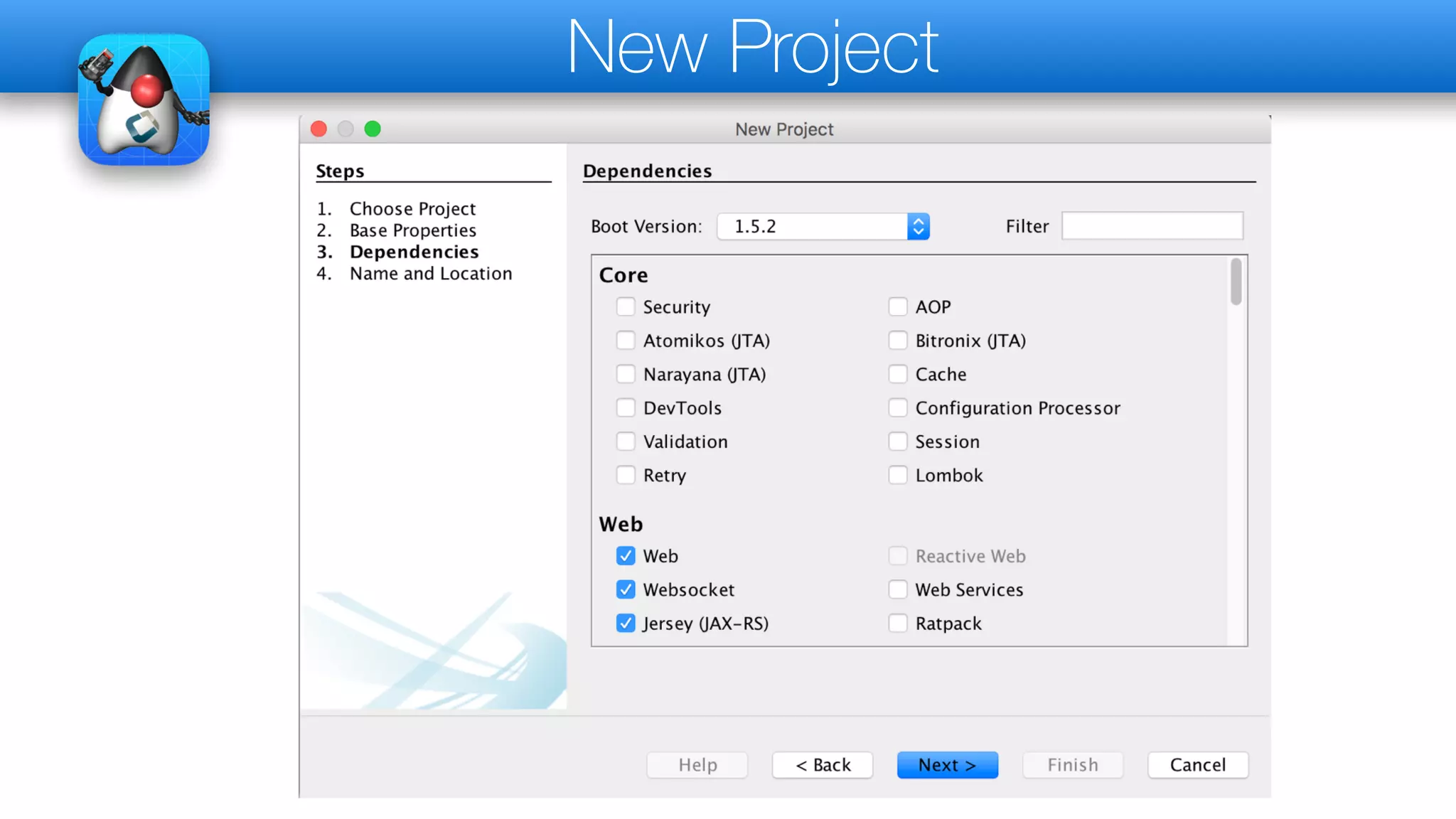
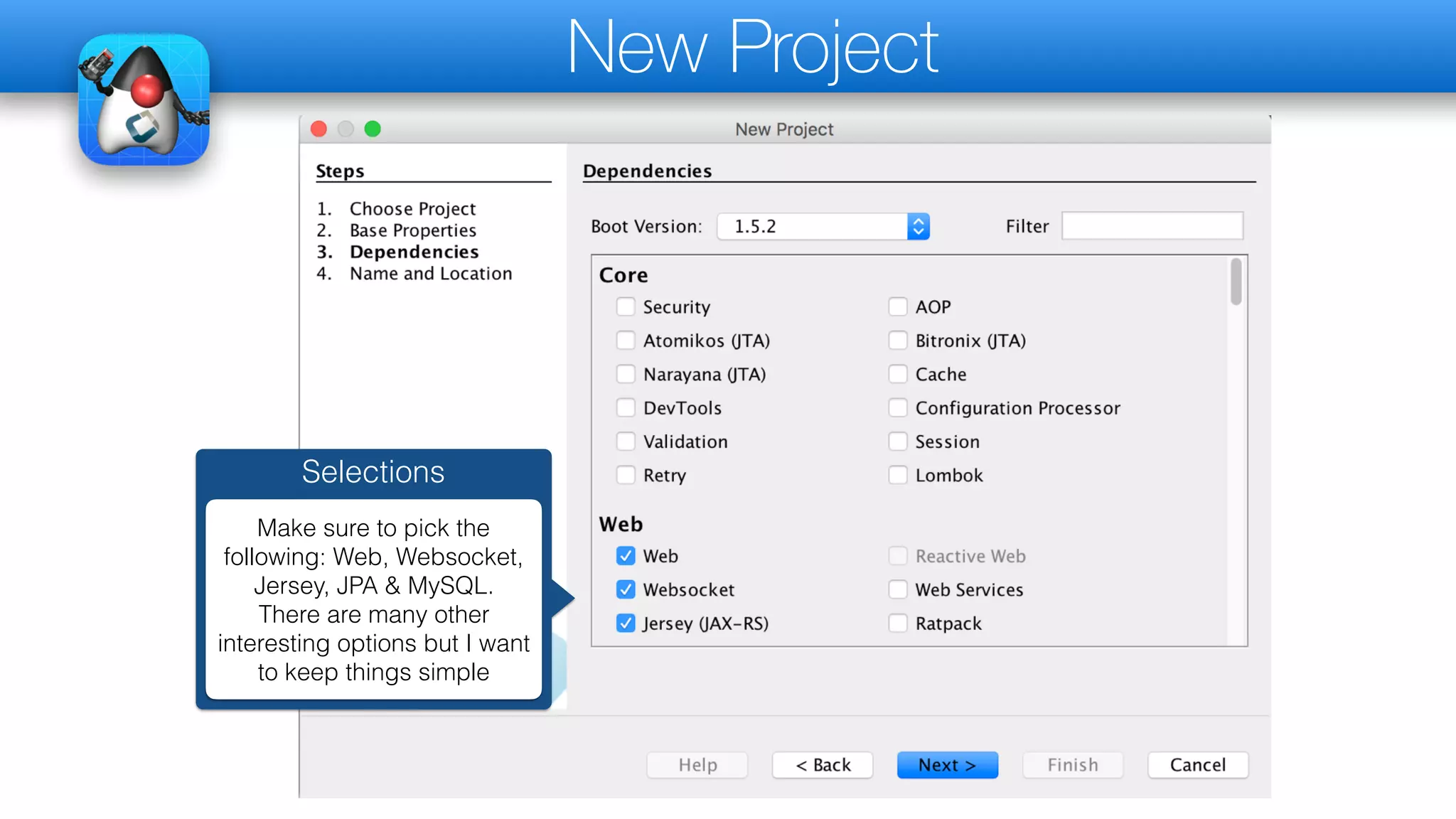
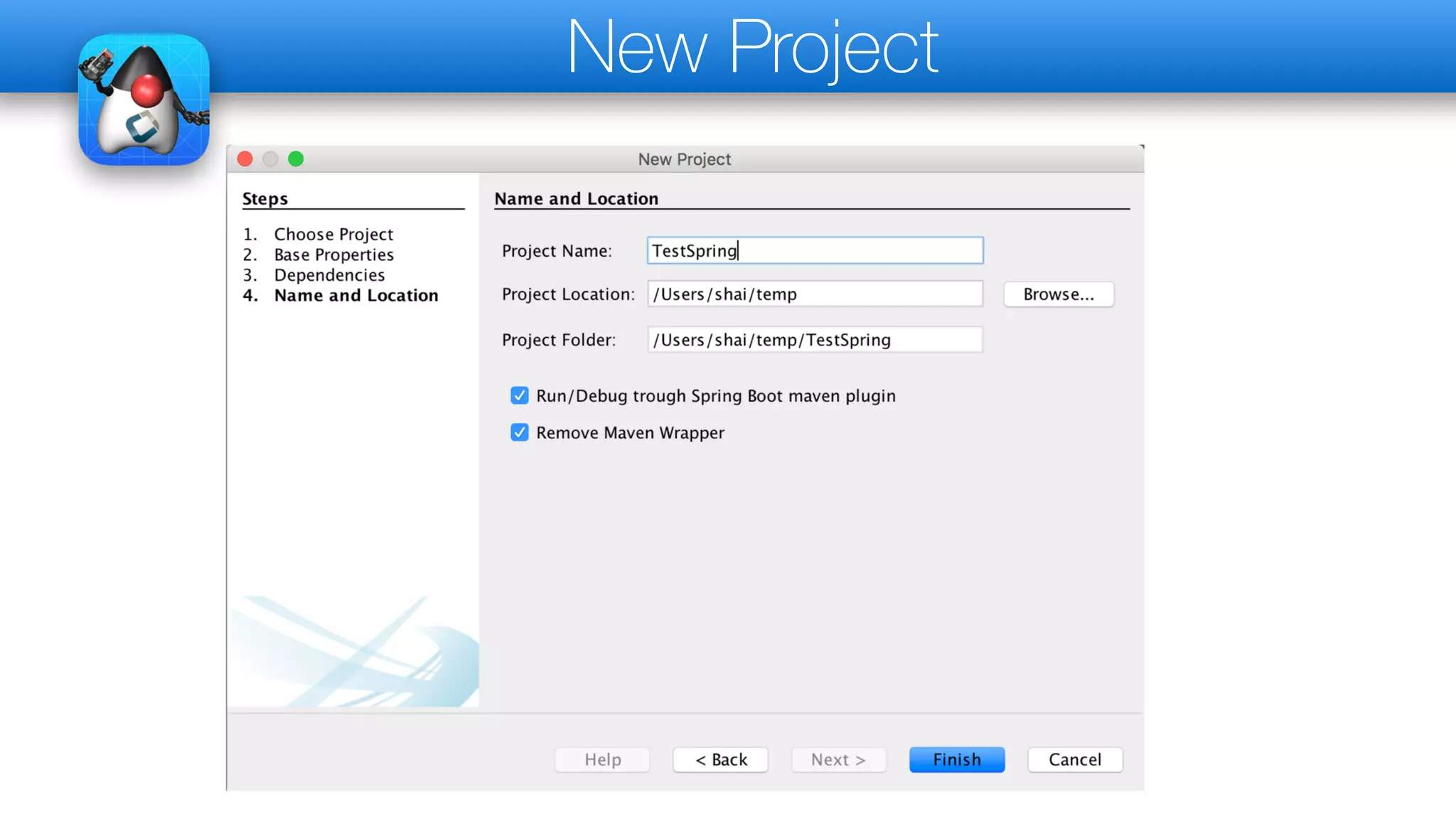
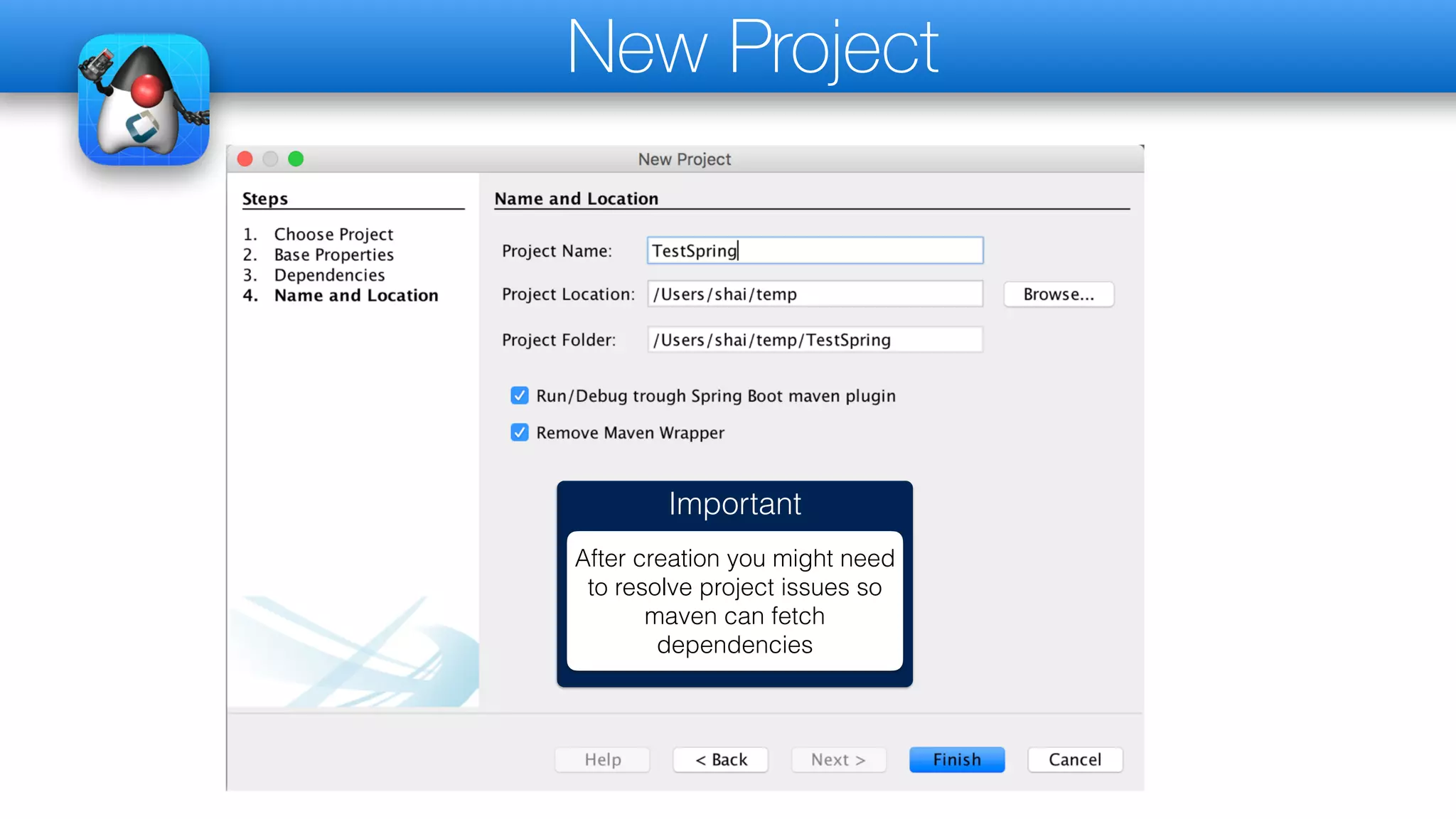
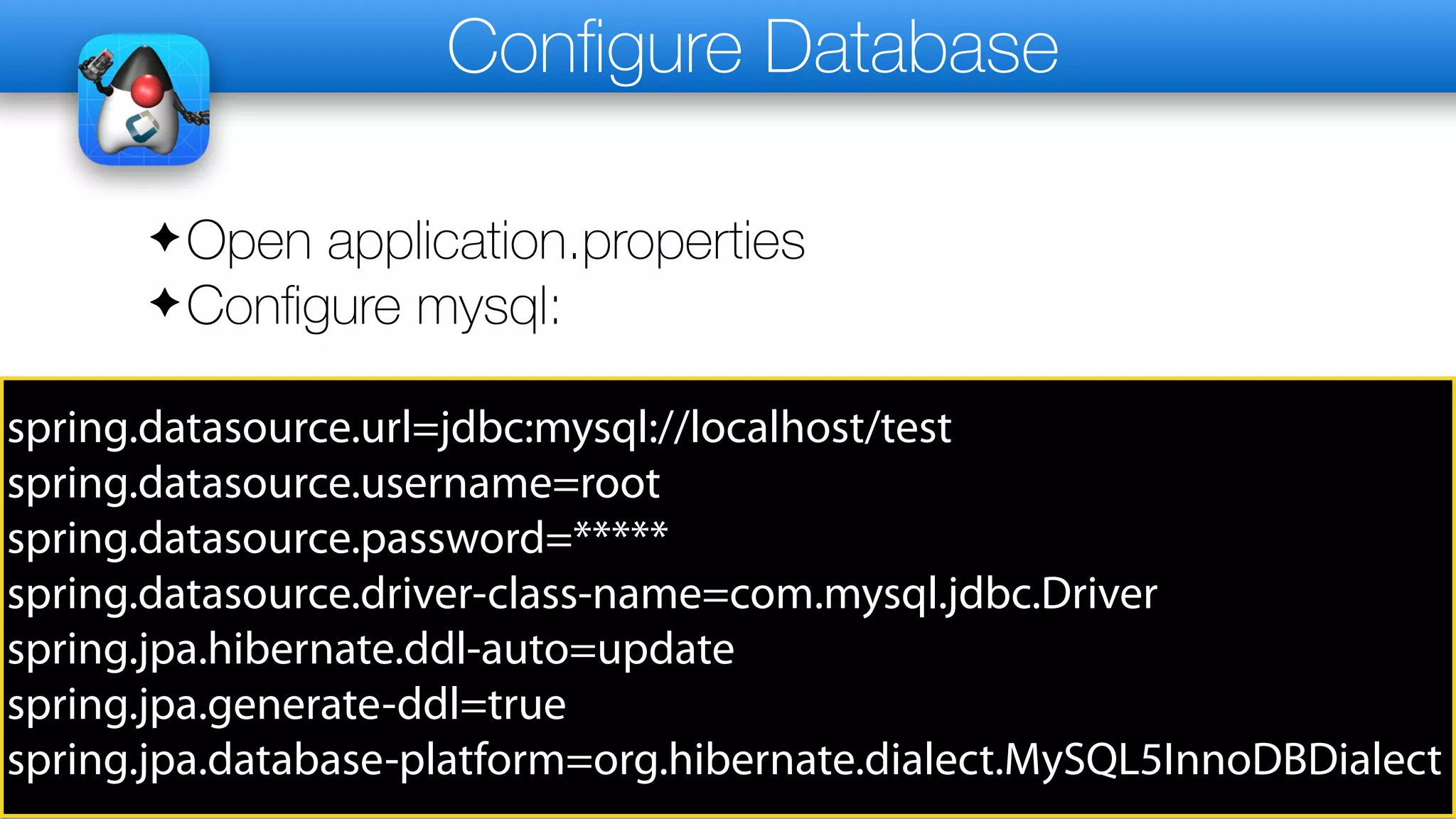
![The Main App
✦The main app of bootstrap doesn’t do much:
package com.codename1.testapp;
import org.springframework.boot.SpringApplication;
import org.springframework.boot.autoconfigure.SpringBootApplication;
@SpringBootApplication
public class TestAppApplication {
public static void main(String[] args) {
SpringApplication.run(TestAppApplication.class, args);
}
}](https://image.slidesharecdn.com/introductiontospringboot-220802133210-116aff9a/75/Introduction-to-Spring-Boot-pdf-22-2048.jpg)
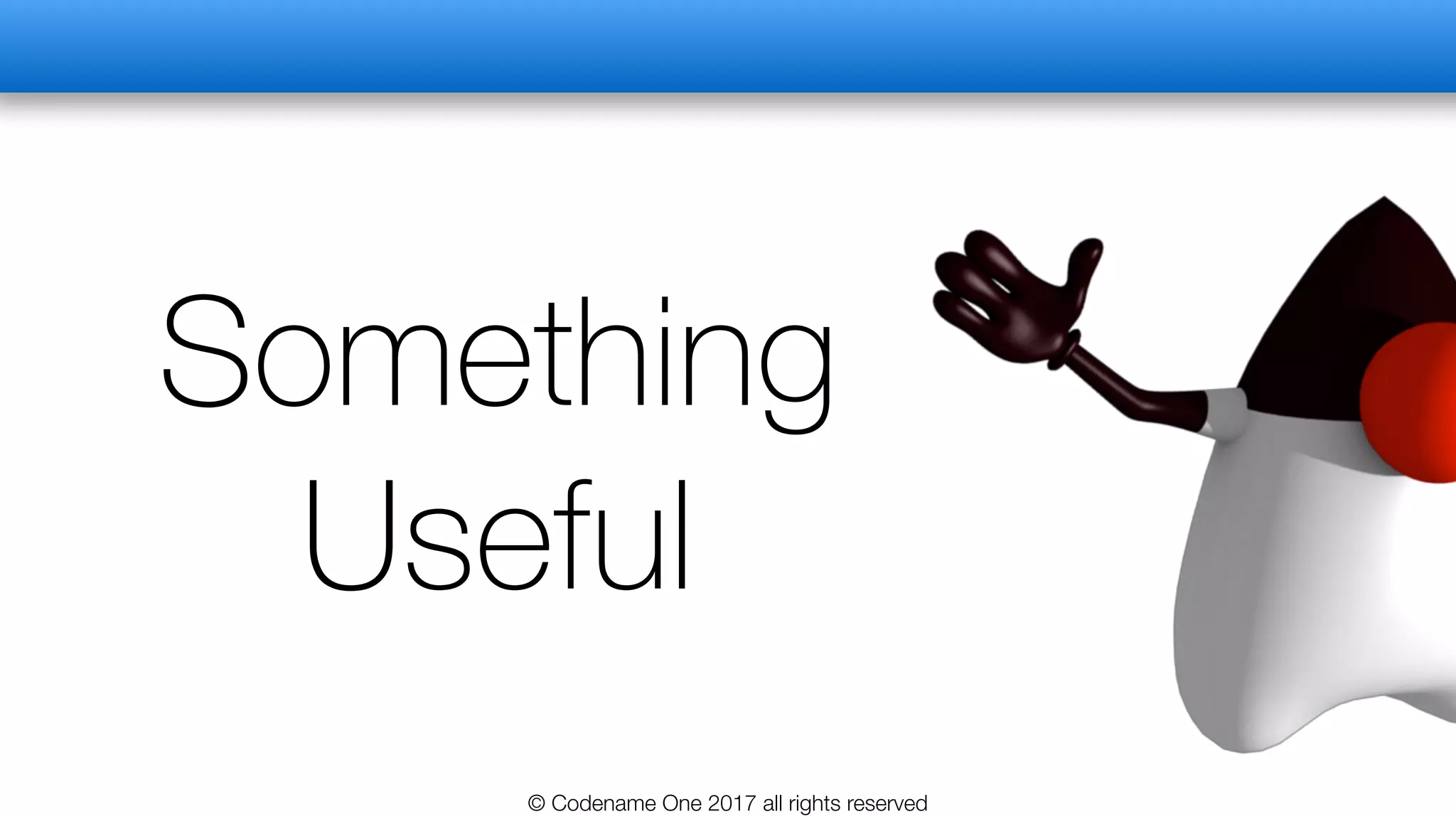
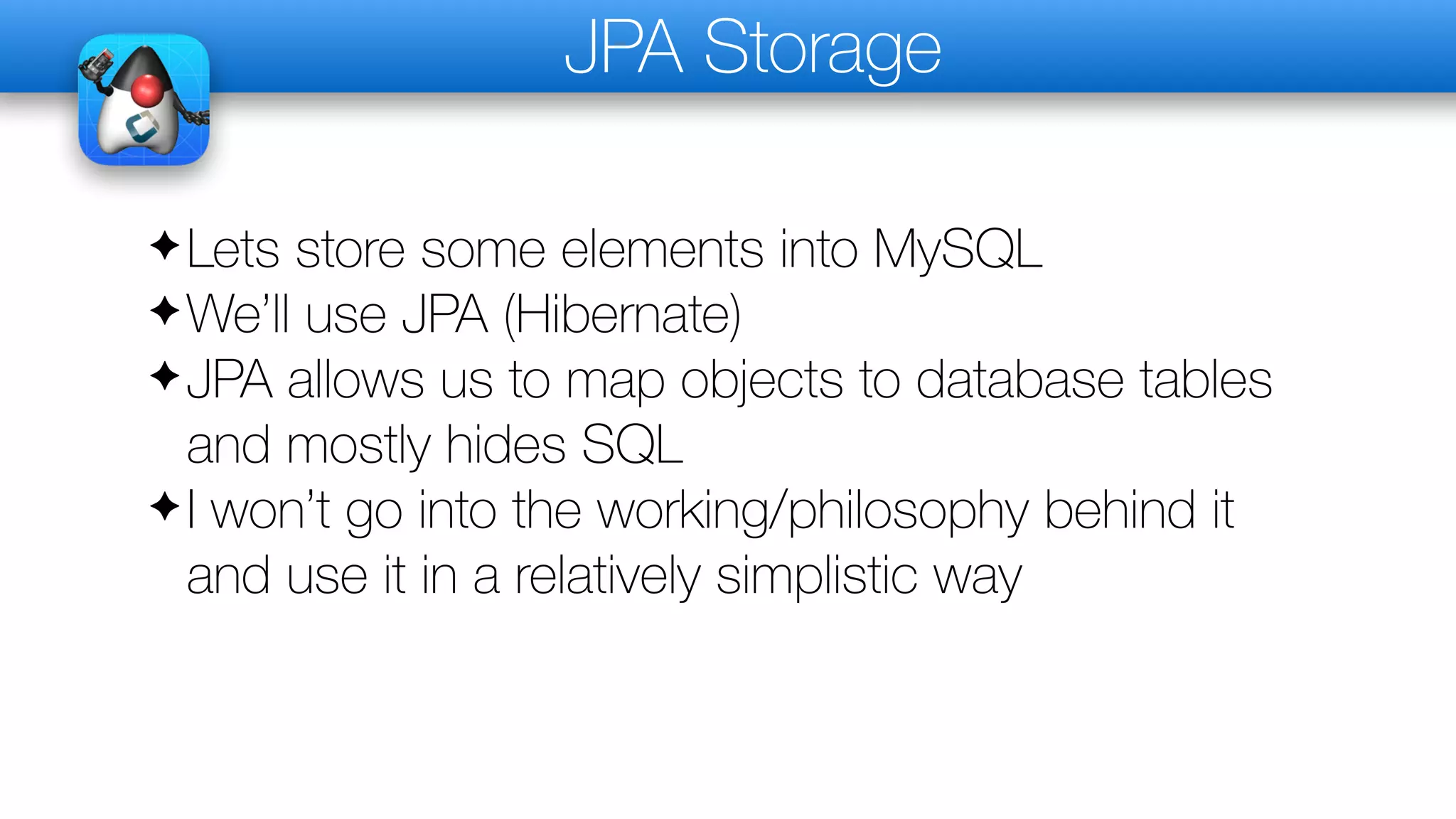
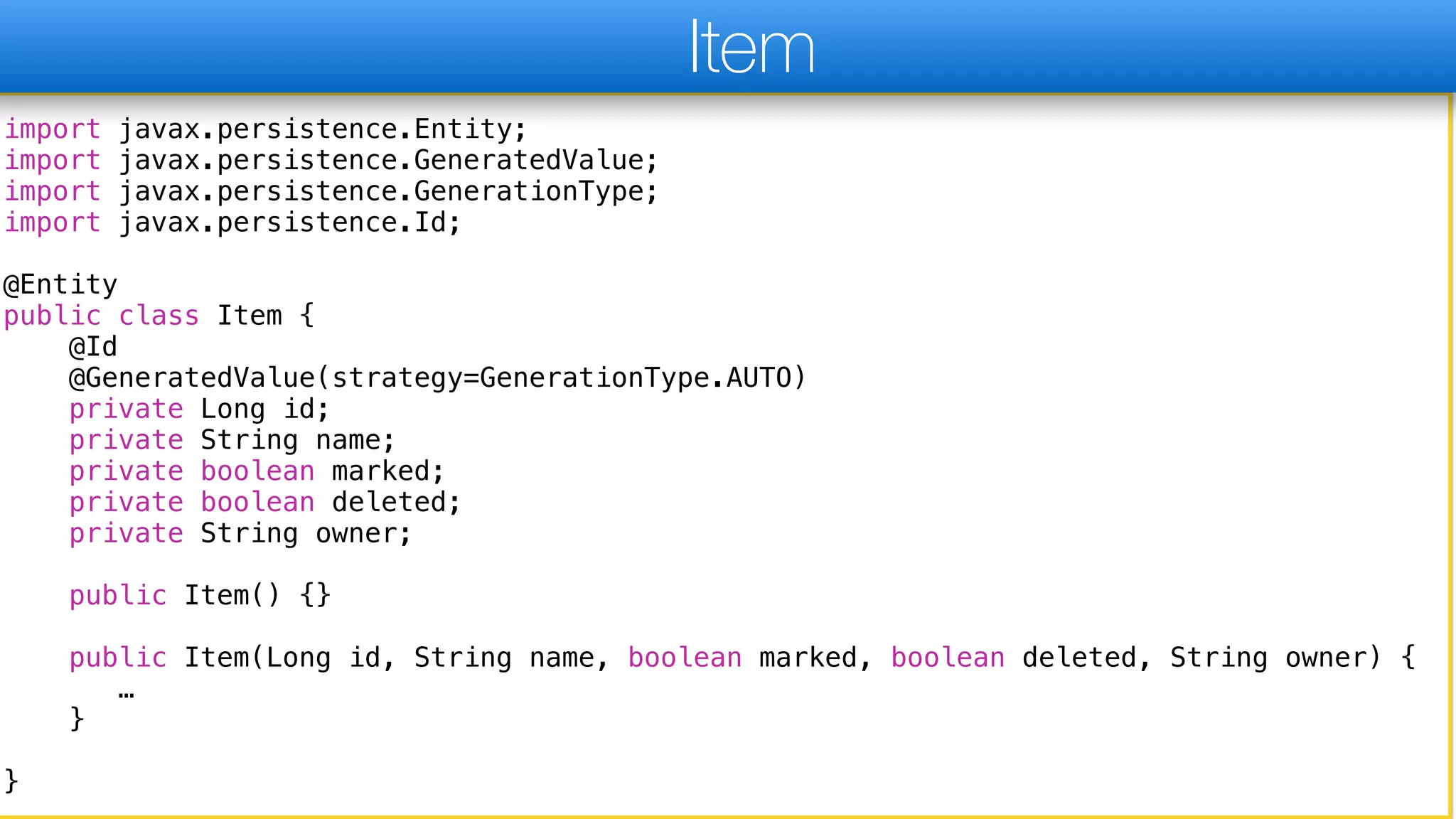
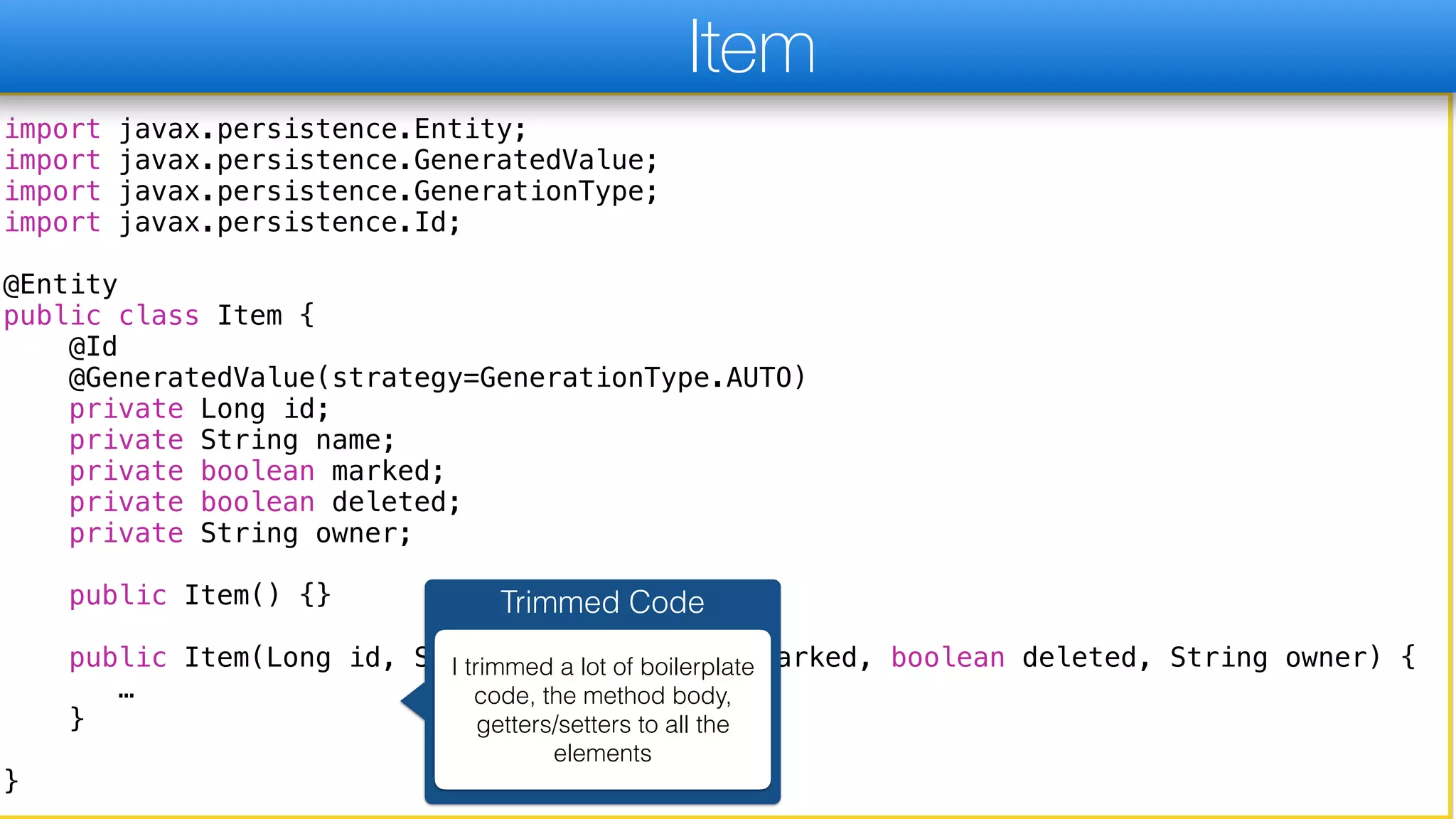
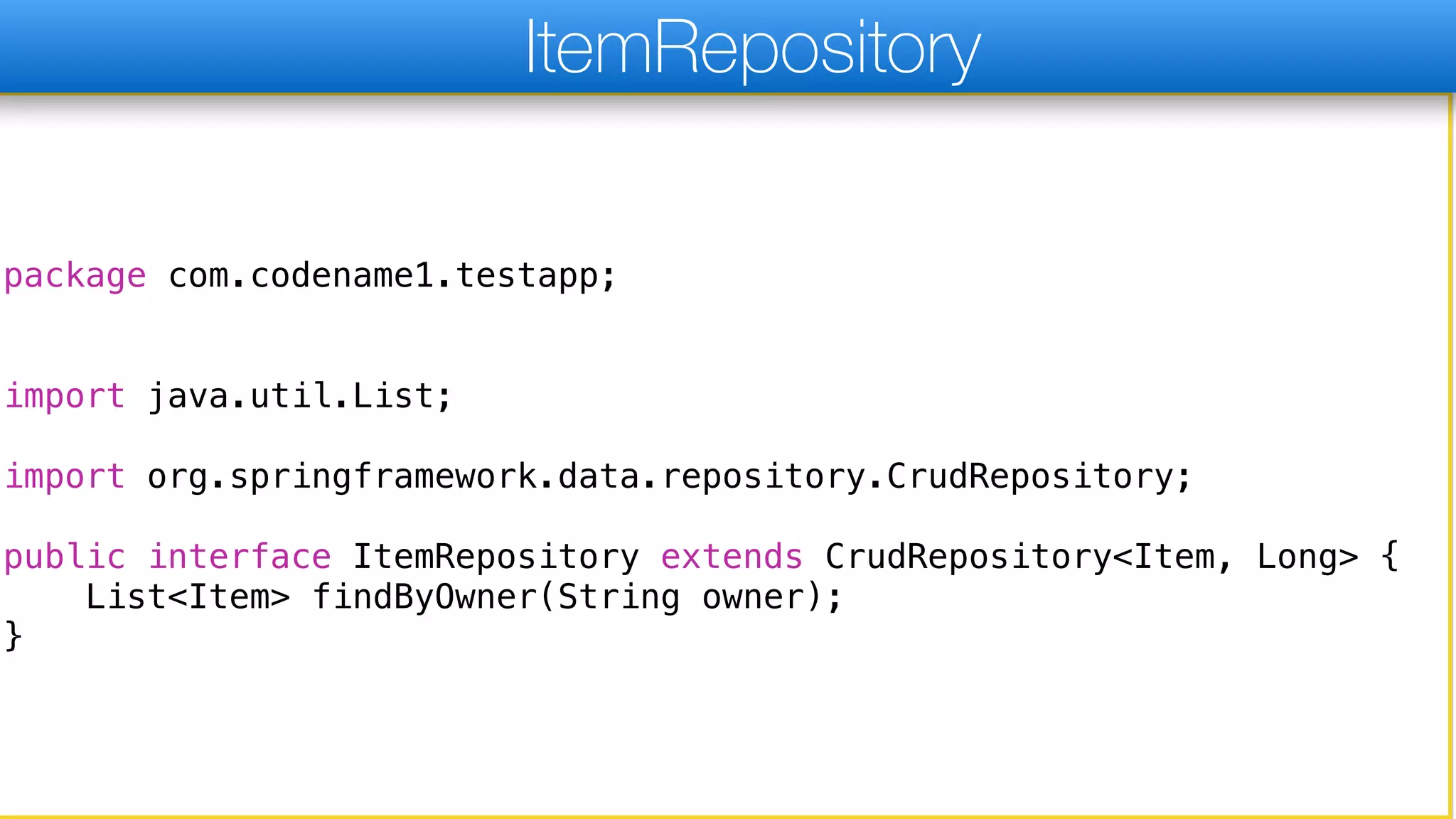
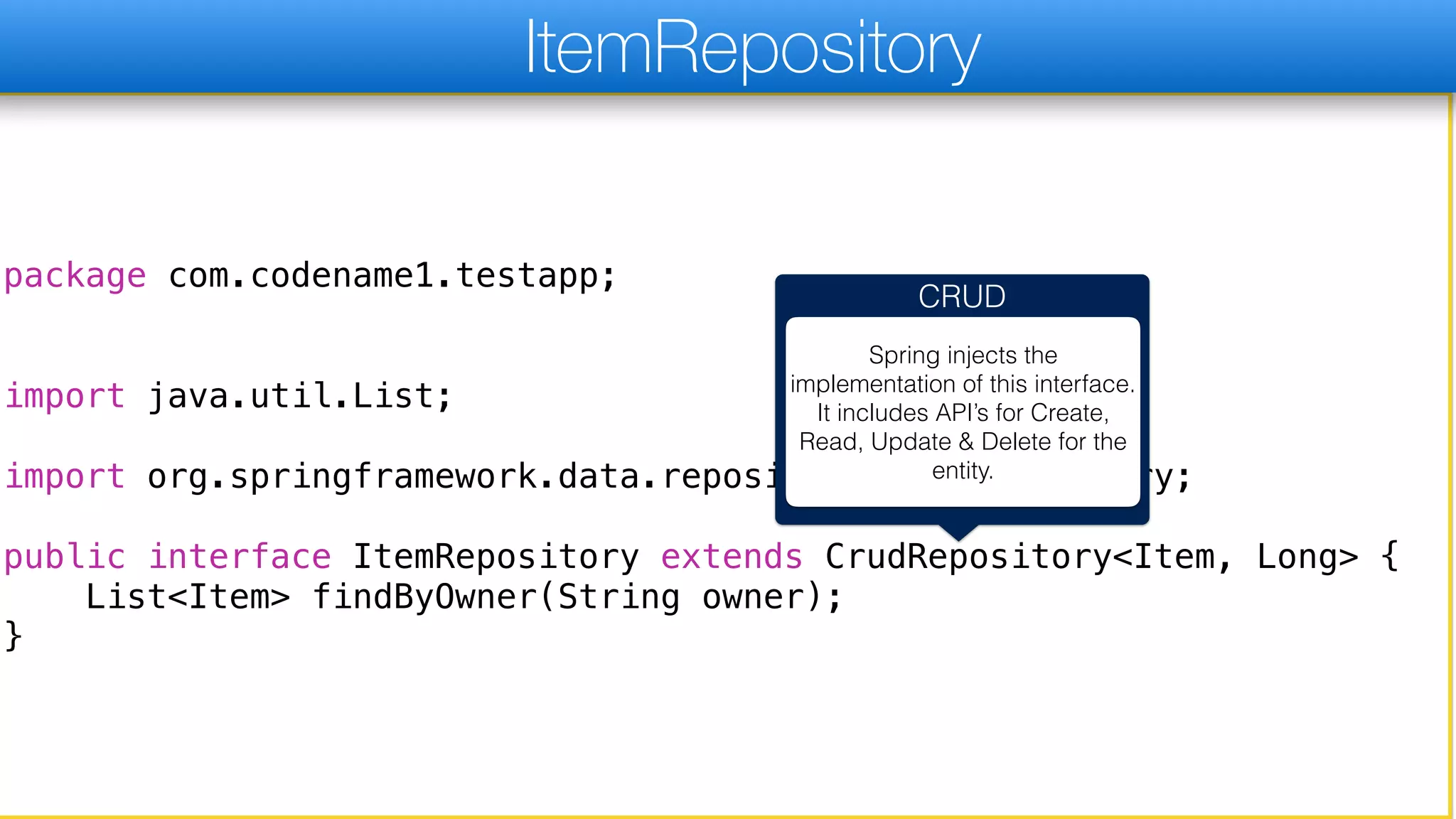
![@Controller
@RequestMapping("/item")
public class ItemService {
@Autowired
private ItemRepository repo;
@RequestMapping(method=RequestMethod.GET)
public @ResponseBody Item[] go(@RequestParam(value="id", required=false) Long id,
@RequestParam(value="owner", required=false) String owner) {
if(id != null) {
Item c = repo.findOne(id);
return new Item[] {c};
}
if(owner != null) {
List<Item> c = repo.findByOwner(owner);
Item[] i = new Item[c.size()];
return c.toArray(i);
}
return new Item[0];
}
@RequestMapping(method=RequestMethod.PUT)
public @ResponseBody Item add(@RequestBody(required=true) Item i) {
i = repo.save(i);
return i;
}
}
ItemService](https://image.slidesharecdn.com/introductiontospringboot-220802133210-116aff9a/75/Introduction-to-Spring-Boot-pdf-29-2048.jpg)
![@Controller
@RequestMapping("/item")
public class ItemService {
@Autowired
private ItemRepository repo;
@RequestMapping(method=RequestMethod.GET)
public @ResponseBody Item[] go(@RequestParam(value="id", required=false) Long id,
@RequestParam(value="owner", required=false) String owner) {
if(id != null) {
Item c = repo.findOne(id);
return new Item[] {c};
}
if(owner != null) {
List<Item> c = repo.findByOwner(owner);
Item[] i = new Item[c.size()];
return c.toArray(i);
}
return new Item[0];
}
@RequestMapping(method=RequestMethod.PUT)
public @ResponseBody Item add(@RequestBody(required=true) Item i) {
i = repo.save(i);
return i;
}
}
ItemService
Injection
This value is injected implicitly
by Spring](https://image.slidesharecdn.com/introductiontospringboot-220802133210-116aff9a/75/Introduction-to-Spring-Boot-pdf-30-2048.jpg)
![@Controller
@RequestMapping("/item")
public class ItemService {
@Autowired
private ItemRepository repo;
@RequestMapping(method=RequestMethod.GET)
public @ResponseBody Item[] go(@RequestParam(value="id", required=false) Long id,
@RequestParam(value="owner", required=false) String owner) {
if(id != null) {
Item c = repo.findOne(id);
return new Item[] {c};
}
if(owner != null) {
List<Item> c = repo.findByOwner(owner);
Item[] i = new Item[c.size()];
return c.toArray(i);
}
return new Item[0];
}
@RequestMapping(method=RequestMethod.PUT)
public @ResponseBody Item add(@RequestBody(required=true) Item i) {
i = repo.save(i);
return i;
}
}
ItemService](https://image.slidesharecdn.com/introductiontospringboot-220802133210-116aff9a/75/Introduction-to-Spring-Boot-pdf-31-2048.jpg)
![@Controller
@RequestMapping("/item")
public class ItemService {
@Autowired
private ItemRepository repo;
@RequestMapping(method=RequestMethod.GET)
public @ResponseBody Item[] go(@RequestParam(value="id", required=false) Long id,
@RequestParam(value="owner", required=false) String owner) {
if(id != null) {
Item c = repo.findOne(id);
return new Item[] {c};
}
if(owner != null) {
List<Item> c = repo.findByOwner(owner);
Item[] i = new Item[c.size()];
return c.toArray(i);
}
return new Item[0];
}
@RequestMapping(method=RequestMethod.PUT)
public @ResponseBody Item add(@RequestBody(required=true) Item i) {
i = repo.save(i);
return i;
}
}
ItemService
Bad Design
I’m returning the Item object
which is an Entity & an internal
representation of the database.
This is bad design as I might
expose internal state!
I’m doing it here as a shortcut](https://image.slidesharecdn.com/introductiontospringboot-220802133210-116aff9a/75/Introduction-to-Spring-Boot-pdf-32-2048.jpg)
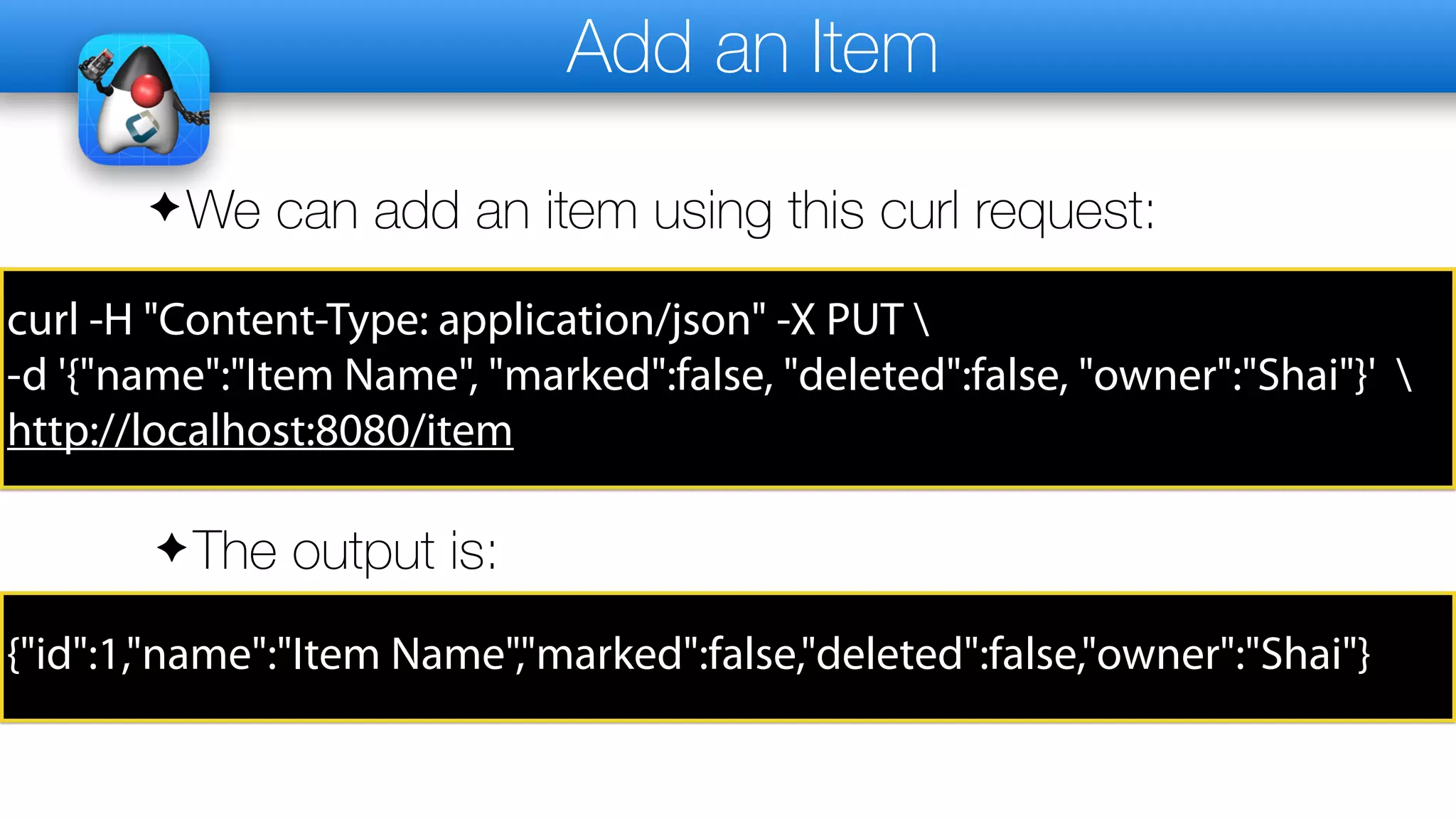
![Fetch My Items
✦We can fetch my items using:
curl http://localhost:8080/item?owner=Shai
✦The output is:
[{"id":1,"name":"Item Name","marked":false,"deleted":false,"owner":"Shai"},
{"id":2,"name":"Item Name","marked":false,"deleted":false,"owner":"Shai"},
{"id":3,"name":"Item Name","marked":false,"deleted":false,"owner":"Shai"}]](https://image.slidesharecdn.com/introductiontospringboot-220802133210-116aff9a/75/Introduction-to-Spring-Boot-pdf-34-2048.jpg)
